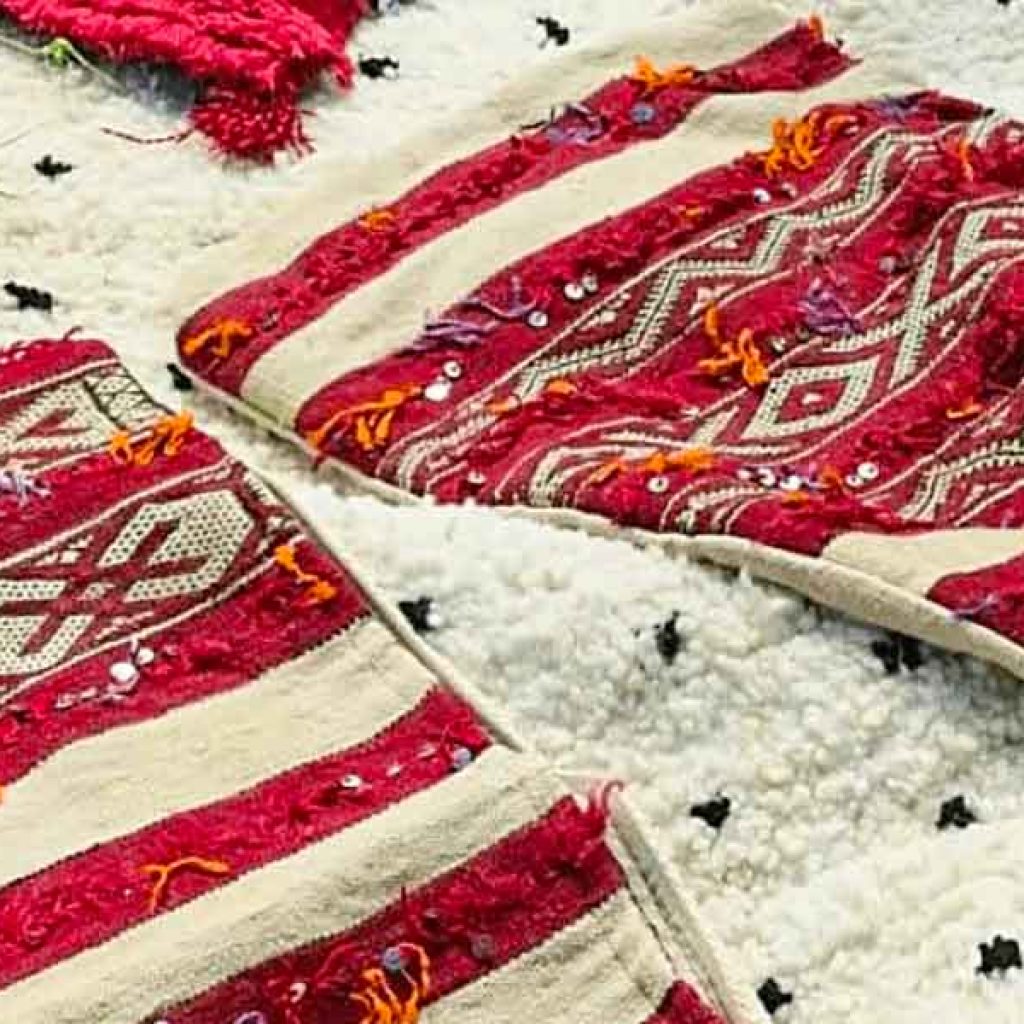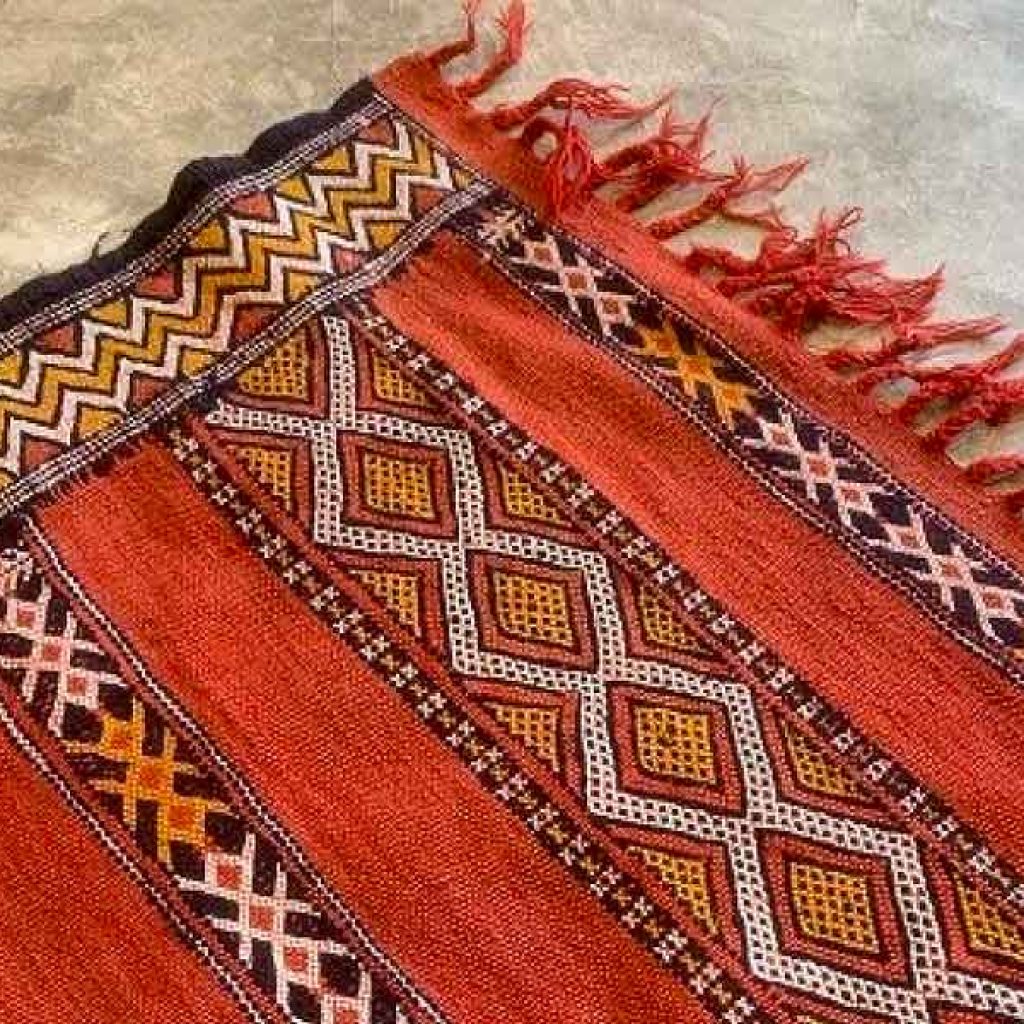Moroccan kilim carpets are known for their vibrant colors and intricate geometric patterns. They are made by nomadic and semi-nomadic Berber tribes, who have a long tradition of carpet weaving in Morocco. The Berber tribes have their own distinct styles and patterns, with each tribe having its own unique designs. The Berbers use natural dyes and hand-spun wool to create their carpets.
The most famous Moroccan kilim carpets come from the Atlas Mountains, where the Berber tribes have been weaving for centuries. The carpets from the Atlas Mountains are known for their bold colors and geometric patterns. They are made with a technique called “soumak” that creates a raised texture.
Another famous Moroccan kilim carpets are from the Middle Atlas, where the Berber tribes have been weaving for centuries. The carpets from the Middle Atlas are known for their use of natural dyes and their geometric patterns.
Moroccan kilim carpets are considered to be a traditional art form and are often passed down through generations of families. Today, the production of Moroccan kilim carpets has decreased, but still these carpets are highly prized by collectors and are increasingly popular as decorative pieces in homes and museums around the world.

It’s worth noting that Moroccan Kilim carpets are different than the traditional Berber carpets, which are made by the same tribes, but use different techniques and designs, and are usually made of wool.
The word “kilim” is believed to have its origins in the Persian word “gelim”, which means “to spread roughly”, referring to the flat-weaving technique used to create these types of rugs. The word “kilim” is also used in Turkish and in some other languages of the region, to describe this type of rug. The word “kilim” is also used in some other languages like in Arabic and in some Turkic languages.


In English, the word “kilim” has been used to refer to these types of flat-woven rugs since at least the 18th century. The word is used to refer to the specific type of flat-woven rug that is typically made by nomadic or village communities using a variety of materials such as wool, cotton, and silk.
The Pazyryk carpet, which was discovered in a tomb in the Altai Mountains of Central Asia, is considered one of the oldest surviving carpets in the world and is believed to date back to the 4th century BCE, which would make it over 2,300 years old. However, it’s worth noting that the Pazyryk carpet is not the oldest carpet ever found, it is the oldest preserved carpet ever found.
Evidence of textiles and carpets from ancient civilizations such as the Persians suggests that carpet making has a much longer history, possibly dating back as far as 6,000 years ago. However, it’s difficult to say for certain as much of the evidence from that period is not well preserved. It is likely that the art of carpet making has existed for thousands of years, with the earliest examples of carpets being made by nomadic tribes in Central Asia and the Middle East.



0 Comment